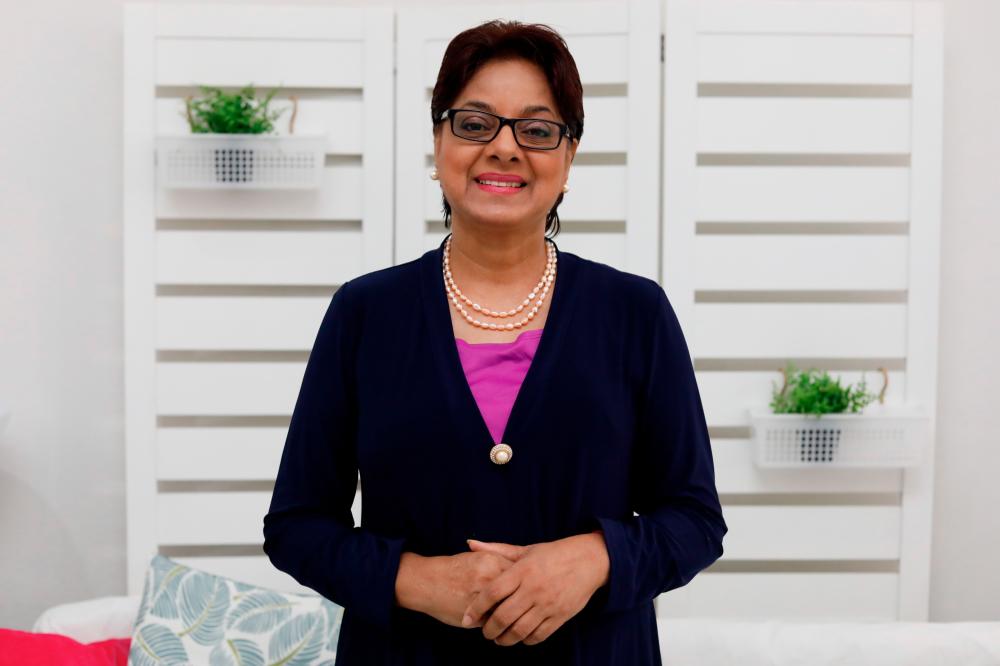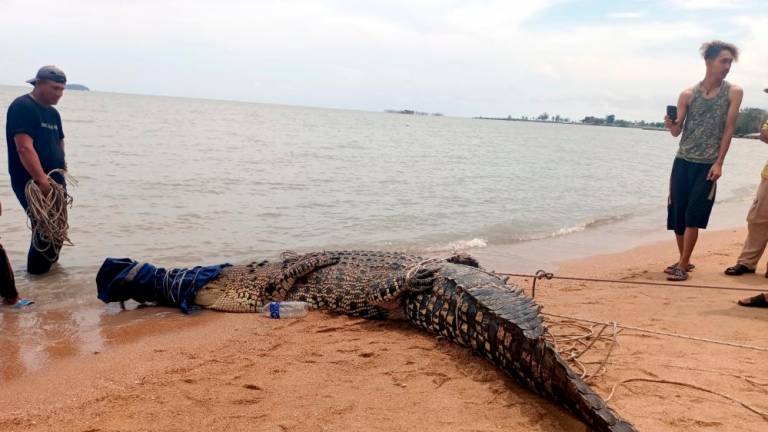SITTING in her office in Bangsar, Somatic Experiencing Practitioner Nahlana T. Kreshnan ran theSun through a straightforward simulation in what she does by asking us to look around the office and tell her what catches our attention, why it did so, how it makes us feel, and where do we feel the sensation.
“This is called orienting. It is part of somatic experiencing” Nahlana explains.
Having been through a tough life, Nahlana turned to somatic experiencing to help her overcome her personal struggles and trauma, and then choosing to pursue it as a profession to help others that are facing their own battles.
Somatic experiencing?
“A Somatic Experiencing (SE) session involves getting you to sense into the body. For example, someone may come in and say they are having anxiety. Usually each issue that a person comes in with has deeper roots, however, we work with the presenting problem in the here and now,” she says.
In each session, Nahlana would then ask her client where the discomfort in the body is, as they recall that anxious moment. This is referred to as titration, where someone concentrates on the discomfort. This followed by orienting and resourcing, where regulation and calm is brought into the nervous system.
“There is a saying in SE: ‘Slow Is More’. This is not something to be rushed through. Our body is like a pressure cooker; it is filled with physiological, physical, emotional and mental stresses. We need to be slow and careful on how we release that pressure,” she stresses.
As she puts it, if the emotions during stressful moments are not processed, it stores itself somewhere in the body and gradually builds up. The stress then begins to emerge as a physical illness or even as a behavioral issue such as anger, addiction, ADD/ADHD and various other disorders.
Nahlana explained that SE is the life work of Dr Peter Levine, who once worked as a stress consultant for the National Aeronautics and Space Administration (NASA) during the agency’s Space Shuttle programme.
“Somatic Experiencing can be used for any mental, emotional or physical issue. It is especially helpful for people with post-traumatic stress disorder and physical trauma, along with pre- and post-surgery. One of the many concepts of this therapy is that our body needs to complete a certain response and when it does not do that, it causes the system to ‘short circuit’.
For example, if you trip and were about to fall, you may have intended to hold a table to stop yourself from falling but you miss the grasp and fall. Later, although you have physically healed, you may still be having pain or some issues with the body. During the SE sessions we will work through the moments of that fall and notice what the body’s impulse is,” Nahlana explained.
Somatic Asia
“Somatic Asia is the company I set up when I wanted to offer Somatic Experiencing sessions to individuals and corporations,” she said. “I worked in Singapore in the corporate sector for nearly 20 years and during that time, I pursued therapy as a passion. I received training in SE from 2014 to 2017.
“I help individuals and as well as groups. For corporations, I help their employees with EQ, Resilience and Self-Regulation. Resilience and Self-Regulation are cornerstones of life itself, if we can embody them, we can withstand almost anything. Resilience is not about ‘being strong’; in SE we help your body to have “capacity for goodness”, that is like an internal buffer for stormy times, the capacity for goodness is what creates resilience.”
Nahlana highlighted that her clients often approach her with problems that range from children or teenagers acting up and relationship issues, to psychological issues as depression and grief.
“A lot is mentioned about mental health. Actually, we need to look at emotional health that begins from a young age. We are rarely taught how to deal with our emotions, so we just go through life, coping until it eventually explodes.”
She explains that SE is especially helpful for people who have trouble articulating their emotions or are embarrassed to reveal too much.
“This is where SE really helps, because we do not need to know the details of the event or the story. We work with the body and how their emotions show up as physical sensations in the body. That is where my work begins.”














